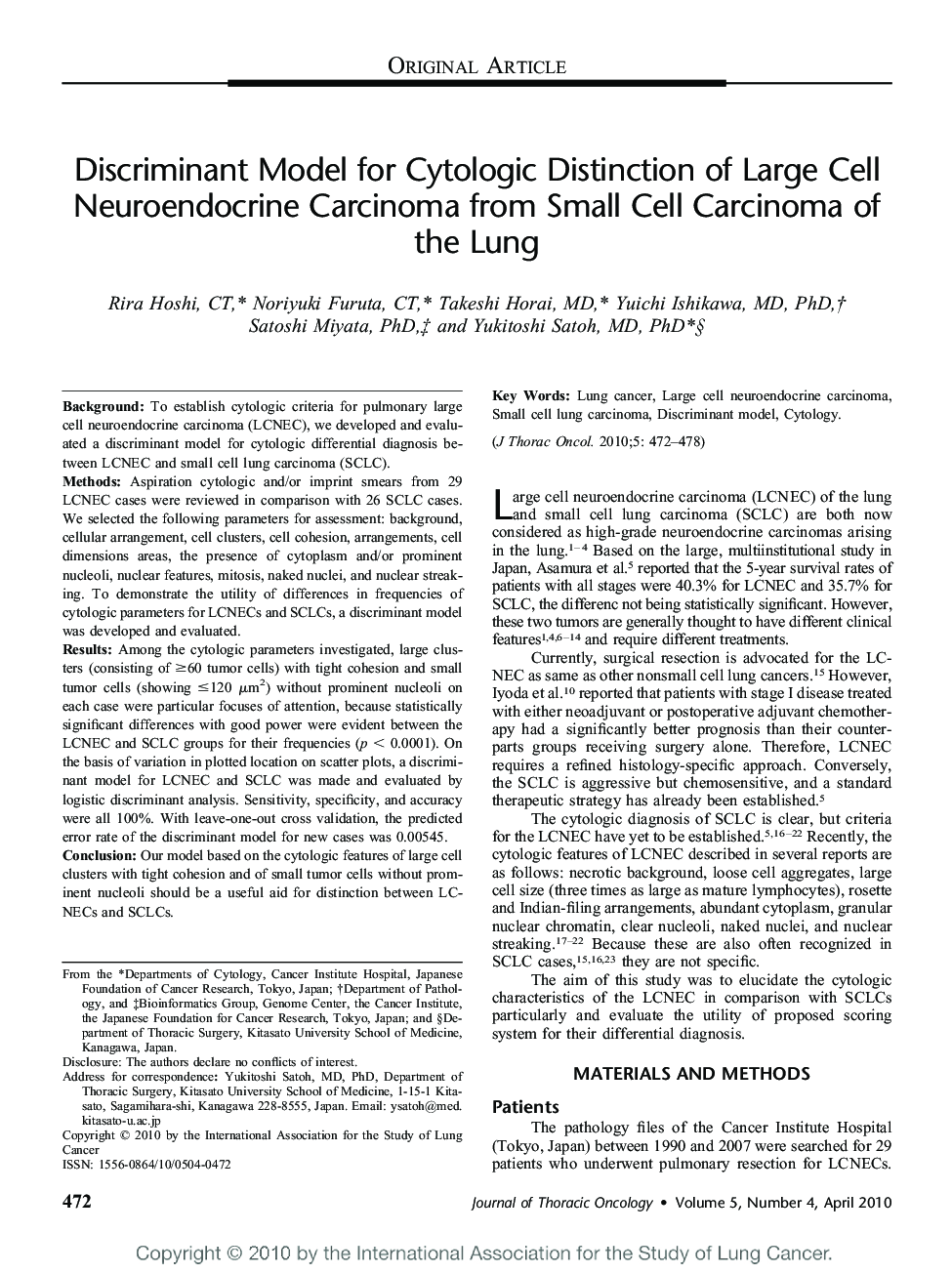| Article ID | Journal | Published Year | Pages | File Type |
|---|---|---|---|---|
| 3991858 | Journal of Thoracic Oncology | 2010 | 7 Pages |
BackgroundTo establish cytologic criteria for pulmonary large cell neuroendocrine carcinoma (LCNEC), we developed and evaluated a discriminant model for cytologic differential diagnosis between LCNEC and small cell lung carcinoma (SCLC).MethodsAspiration cytologic and/or imprint smears from 29 LCNEC cases were reviewed in comparison with 26 SCLC cases. We selected the following parameters for assessment: background, cellular arrangement, cell clusters, cell cohesion, arrangements, cell dimensions areas, the presence of cytoplasm and/or prominent nucleoli, nuclear features, mitosis, naked nuclei, and nuclear streaking. To demonstrate the utility of differences in frequencies of cytologic parameters for LCNECs and SCLCs, a discriminant model was developed and evaluated.ResultsAmong the cytologic parameters investigated, large clusters (consisting of ≥60 tumor cells) with tight cohesion and small tumor cells (showing ≤120 µm2) without prominent nucleoli on each case were particular focuses of attention, because statistically significant differences with good power were evident between the LCNEC and SCLC groups for their frequencies (p < 0.0001). On the basis of variation in plotted location on scatter plots, a discriminant model for LCNEC and SCLC was made and evaluated by logistic discriminant analysis. Sensitivity, specificity, and accuracy were all 100%. With leave-one-out cross validation, the predicted error rate of the discriminant model for new cases was 0.00545.ConclusionOur model based on the cytologic features of large cell clusters with tight cohesion and of small tumor cells without prominent nucleoli should be a useful aid for distinction between LCNECs and SCLCs.
